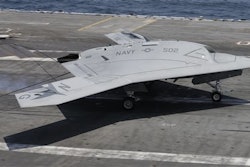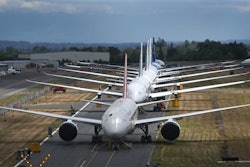Multi-year product delays, exorbitant costs and organizational silos have been vexing the aerospace and defense industry the past several years. To overcome these challenges, they need to improve their product development processes.
Improvement can be achieved by leveraging a process called configuration management (CM), a process to consistently develop products and bring them to market. This process, which encompasses the entire phase of product development, from its concept phase through development and delivery to customers, ensures complex production systems perform accurately and consistently through their entire product lifecycle.
Configuration management is one of several product lifecycle management (PLM) disciplines. PLM is increasingly being used by large-scale manufacturing industries, such as aerospace and defense, to manage the entire product lifecycle, from conception to its disposal.
Configuration management controls the structure of assembling, manufacturing, maintaining and testing processes. The discipline also controls arrangement of the means used, such as tooling. Aerospace and manufacturing companies need to control and certify the content of their products at any time and CM makes that possible.
A different process
Implementation of CM differs from how it was first conceived in the 1950s — as a simple library function for tracking and documenting changes in production systems. Such isolated applications have become insufficient and needed to expand. The marketplace has become so big and competitive that a narrow application negates any real value CM could deliver. The CM promise of tighter alignment between people and systems, cost-savings and faster time to market can only be achieved when CM gets applied across the entire product lifecycle.
CM must closely connect every stage and participant in a product’s lifecycle. This includes manufacturing, on-board procurement, customer support, suppliers and customers. Integrating these elements brings improved collaboration and quality control to product development ultimately leading to better A&D products.
The challenge, however, is instituting this methodology across a global enterprise. For some companies, the scope remains initially too large to mesh together. But initial steps can be taken to make that task more manageable. One of those steps is for these companies to ask and answer six key questions:
1. “What benefits can I expect from CM?”
To gain the full benefits of CM, a company needs to strike the right balance between control and flexibility. They also need to invest in IT, such as installing pre-integrated systems that help CM to take hold more efficiently.
2. “How do I immediately create the right product structure that also doesn’t inhibit industrial flexibility?”
When dealing with a highly diverse product development cycle with many differing product views and constituents, achieving synchronized CM out of the box remains difficult. Requirements become numerous and more complex; fine-tuning becomes necessary. But once these adjustments are made, synchronized CM will follow without much difficulty. To achieve industry flexibility, a company must go further along the transformation process, becoming a process-oriented organization that breaks industry silos and aligns processes with objectives and performance measurements.
3. “How can I properly manage CM?”
Resource management and planning provides an important building block for a CM system. Such management and planning give A&D companies better control over interconnected parts and dealing with multiple concurrent product lifecycle changes. Companies that pursue an expansive CM course must go into it accepting a tremendous amount of change in how they do things. A clear view on the costs and benefits of enterprise resources will guard against overuse or underuse.
4. “How can I best track the overall status of my programs and products?”
Companies should implement a CM planning discipline that places indicators on each phase of the product lifecycle, tracking conception, design, industrialization and the volume of work remaining. Companies become more attuned to each development phase and can then better shepherd products along the way.
5. “Which model is best for integrating suppliers and collaborators into ‘an extended enterprise’?”
Collaboration based on paper and manual exchanges are no longer sufficient in a global environment requiring pinpoint accuracy. A&D companies need to migrate to a team work model with common processes and platforms based on international standards. This methodology will reduce costs and facilitate faster data exchanges with improved security.
6. “How can I use CM to capture new and more sustainable revenue goals?”
Previously, A&D companies lacked clear visibility as to which products were maintained or serviced by outside business collaborators. CM provides this insight which, in turn, can be used to build more innovative offers. Examples include tailor-made processes adapted to each customer, predictive maintenance, recycling spare parts back into production and improving component mixes from various manufacturers.
Final Thoughts
The relative importance of these six questions will vary between businesses. In every case, however, they provide a deeper and more fundamental understanding of how to make CM function effectively in an enterprise-wide environment. Integration, specification and unified planning are key to achieving high performance. When properly applied, they will pave the way for end-to-end, collaborative CM.
Damien Lasou is a global managing director with Accenture’s aerospace and defense practice. He can be reached at [email protected].























